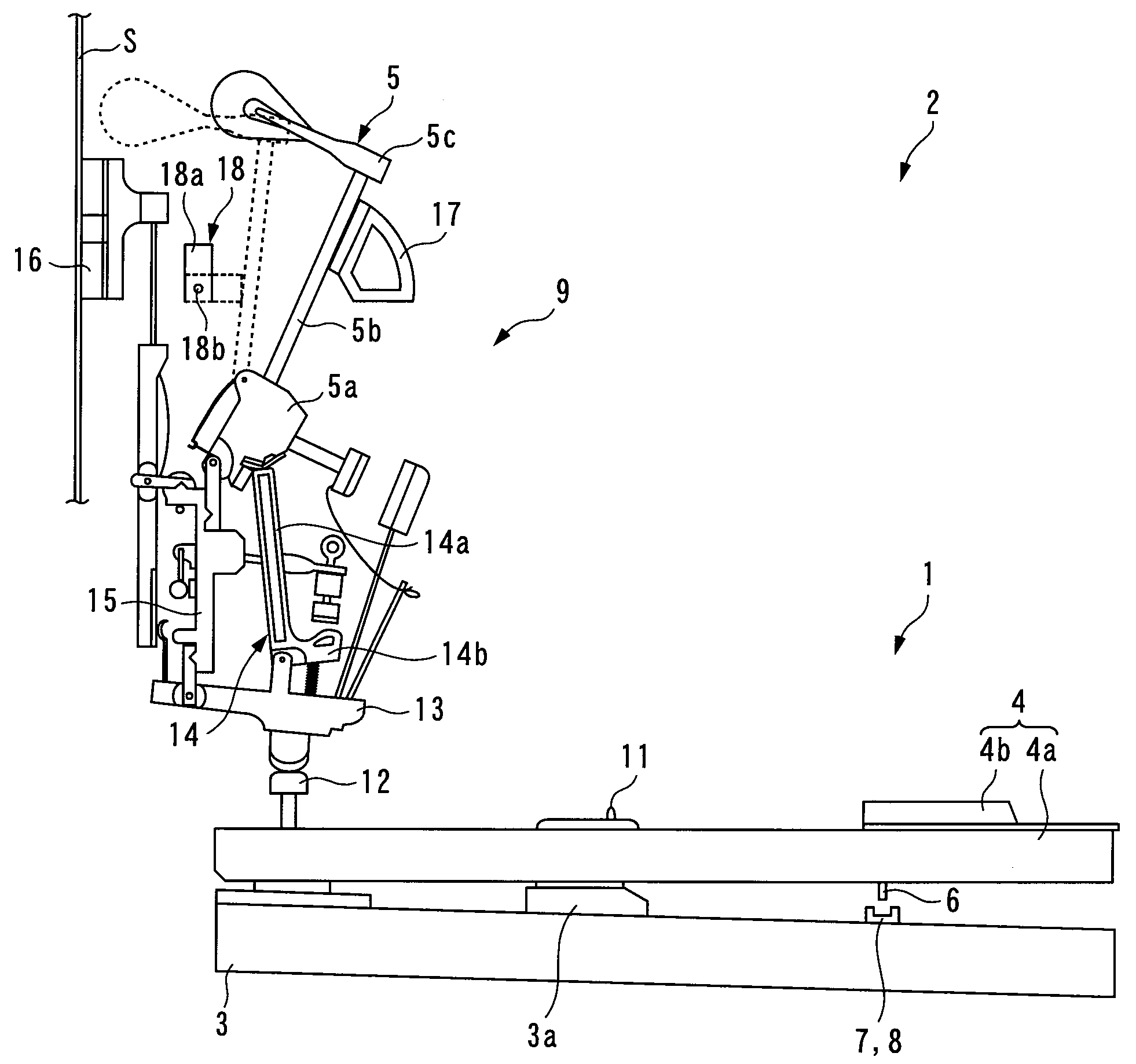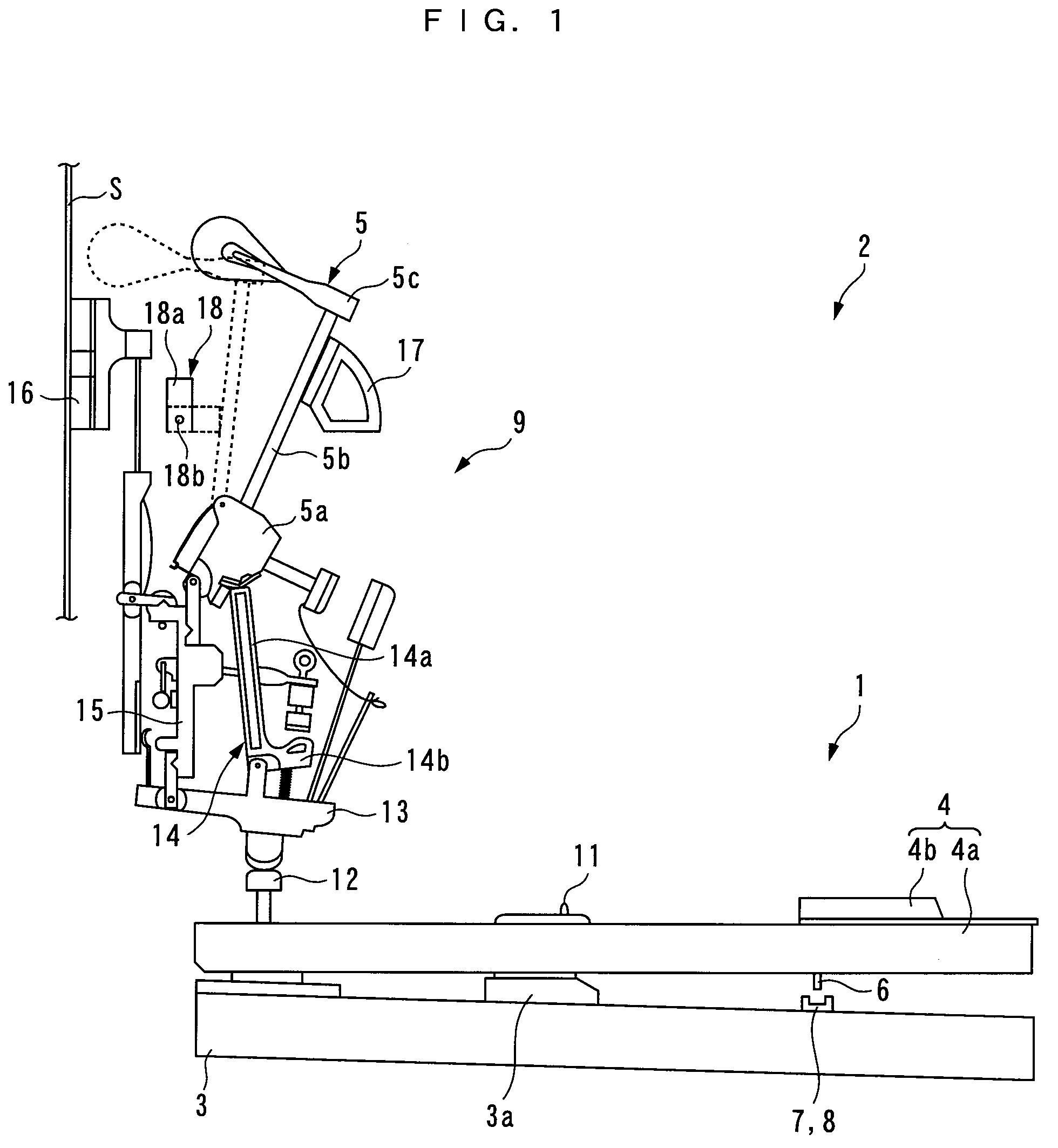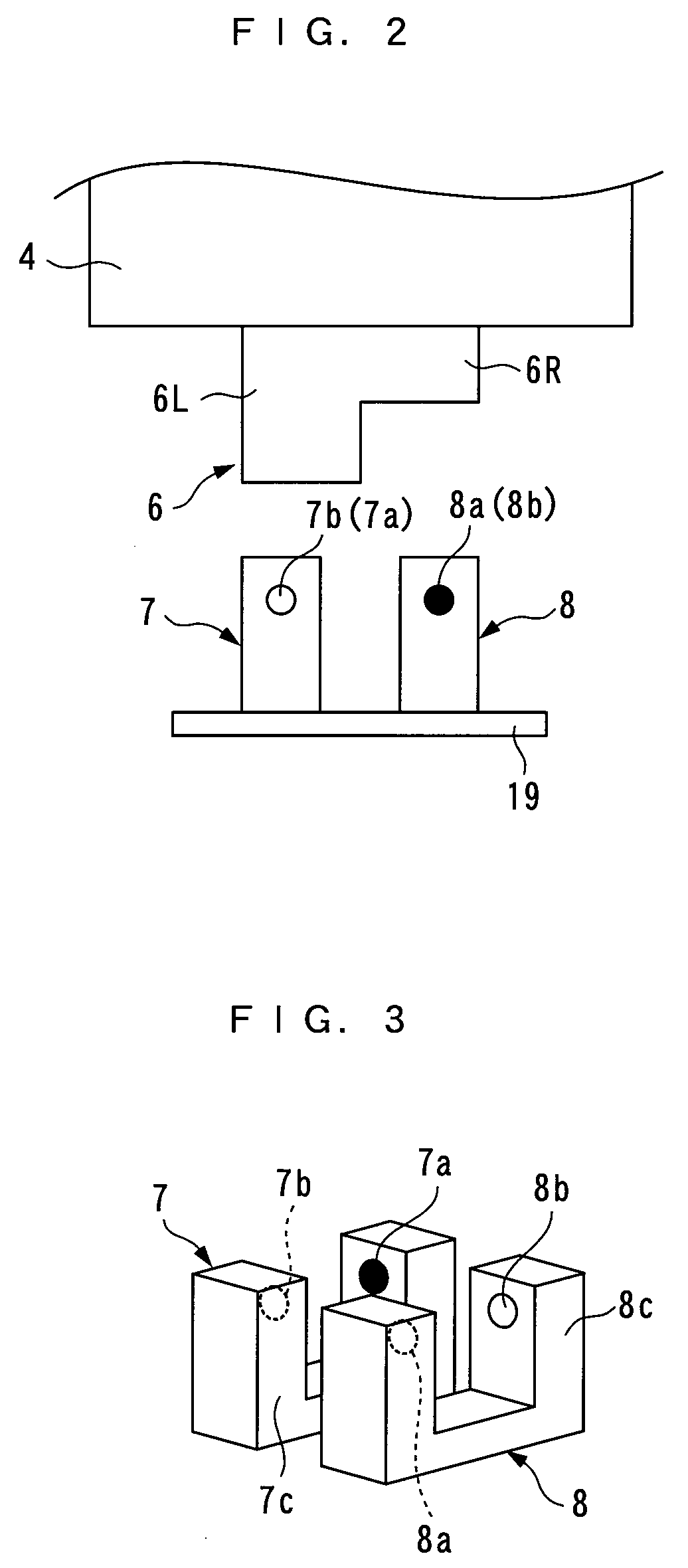Touch detecting device of keyboard instrument
a keyboard instrument and detecting device technology, applied in the field of keyboard instruments, can solve the problems of inability to accurately detect the key depression speed, the inability to detect the key depression timing or the key release timing accurately, and the reduction of the amount of light received by the light receiving part, so as to reliably eliminate the adverse influence of the reflected light and reduce the amount of reflected light
- Summary
- Abstract
- Description
- Claims
- Application Information
AI Technical Summary
Benefits of technology
Problems solved by technology
Method used
Image
Examples
first embodiment
[0033]The invention will now be described in detail with reference to the drawings showing preferred embodiments thereof. FIG. 1 shows a upright silent piano 2 (keyboard instrument) to which is applied a touch detecting device 1 according to the present invention. In the following description, a player's side of the silent piano (right side as viewed in FIG. 1) will be referred to as “front”, and a remote side (left side as viewed in FIG. 1) from the player's side as “rear”. Further, the player's left side will be referred to as “left”, and the player's right side as “right”.
[0034]As shown in FIG. 1, the silent piano 2 is comprised of a plurality of (e.g. eighty-eight) keys 4 (only one of which is shown) mounted on a keybed 3 and including white keys 4a and black keys 4b, an action 9 provided above the rear part of each key 4, a hammer 5 provided for the key 4 to strike an associated string S, and a musical tone generator 10 (see FIG. 7) for electronically generating performance sou...
second embodiment
[0092]Further, although in the second embodiment, the first to third detection signals S11 to S13 are delivered to the single sensor scan circuit 22, this is not limitative. For example, two sensor scan circuits may be separately provided such that the detection signal S11 from the first optical sensor 42 disposed in the vicinity of the key 4 can be delivered to one of the sensor scan circuits, and the second and third detection signals S12 and S13 from the respective second and third optical sensors 43 and 44 disposed in the vicinity of the hammer 5 can be delivered to the other sensor scan circuit. In this case, it is possible to easily connect the optical sensors to the respective associated sensor scan circuits, and increase the degree of freedom in layout of the optical sensors.
[0093]Further, although in the embodiments, the present invention is applied to the upright silent piano 2, by way of example, this is not limitative, but the present invention can be applied to a grand-...
PUM
 Login to View More
Login to View More Abstract
Description
Claims
Application Information
 Login to View More
Login to View More - R&D
- Intellectual Property
- Life Sciences
- Materials
- Tech Scout
- Unparalleled Data Quality
- Higher Quality Content
- 60% Fewer Hallucinations
Browse by: Latest US Patents, China's latest patents, Technical Efficacy Thesaurus, Application Domain, Technology Topic, Popular Technical Reports.
© 2025 PatSnap. All rights reserved.Legal|Privacy policy|Modern Slavery Act Transparency Statement|Sitemap|About US| Contact US: help@patsnap.com



